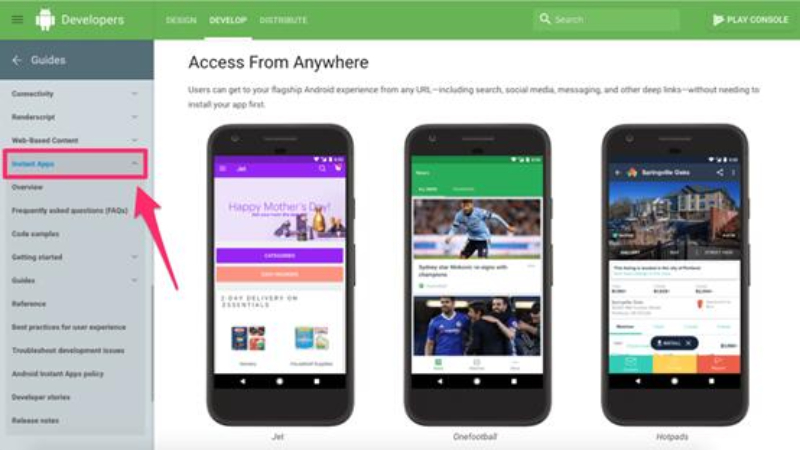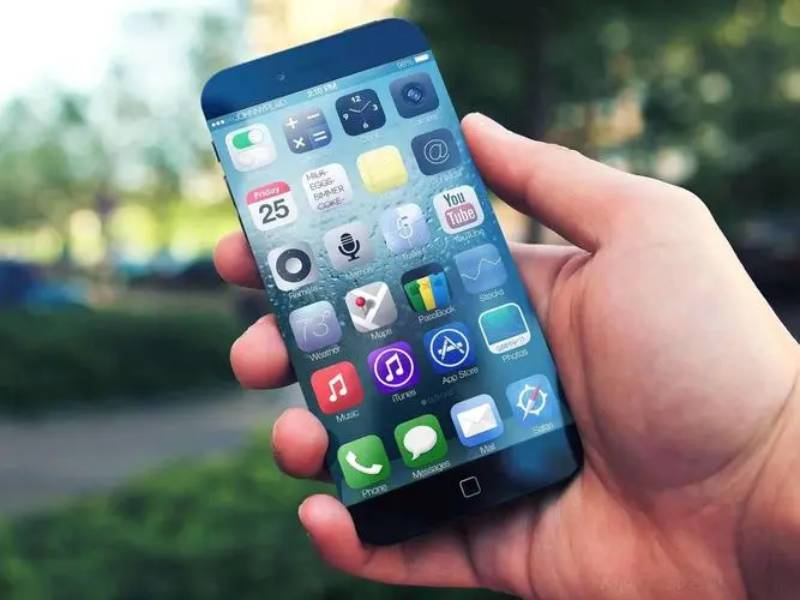12 Mobile Technology Waves for 2023
In order to be successful in any business, you’ve got to always keep your finger on the pulse.
Stay updated with industry trends in addition to researching your competitors. It’s no secret that our world is moving in a mobile direction. That’s why every business, regardless of the industry, needs to stay updated with new mobile trends. This is especially important for companies with a mobile presence, such as an app or mobile site.
Whether you’re a mobile app developer or you run a local pizza shop, it’s important to stay educated in the mobile space. This statement holds true for those of you who don’t have a mobile app as well. That’s because you should be thinking about mobile application development if you’re not already in the process.
But with so many channels of information at your fingertips, it can be difficult to determine what trends are legitimate and which ones are just a fad or fake news.
1. Android Instant Apps are on the rise
Android app developers or people who have an app available on the Google Play Store have probably heard of Android Instant Apps.
These are native apps that don’t require installation and run instantly, hence the name.

This technology is now available to all developers. So whether you’re an existing Android developer or a new one, anyone has access to this type of development.
Android Instant apps are revolutionary for both developers and users. Now a user can run an app and test it out without needing to download it first.
This works on the newest Android devices. It’s supported by devices from Android 5.0 to Android 8.0, or API level 21 to API level 26.
Having a smooth Instant App will be necessary to get users to download your app. If they don’t have a good experience when they’re trying it out, they probably won’t install it.
This new technology also poses some new questions. Will Apple follow this trend and create a similar feature for there app store?
As of now, this feature is strictly for Android devices. But I’ll be interested to see how this plays out over the next year. You should keep an eye on this as well.
2. Mobile artificial intelligence
While we’re not quite there yet, we are seeing more and more advances in artificial intelligence, especially in the mobile industry. Some AI software that you might be familiar with include: Siri,Cortana,Alexa,Google Assistant。
But now regular mobile apps are using voice recognition software and AI to enhance the user experience. Voice recognition also improves hands-free use. Some mobile app accessibility is also linked to AI.
Artificial intelligence is used to bridge translation gaps with voice recognition. Understanding the user’s voice will help developers and marketers learn more about these people. As a result, you’ll be able to target users better and generate more revenue with relevant advertisements.
3. Mobile security
Businesses need to start prioritizing mobile security to protect user information and make sure that all transactions are safe.That’s because some users are hesitant to use payment apps for reasons related to security and distrust.
Businesses who rely on mobile payments need to put these concerns to rest in the coming year.
56% of consumers in the United States believe that mobile payments increase their chances of falling victim to theft and fraud. Only 5% of these consumers believe that mobile payments reduce theft and fraud chances. An additional 13% of US consumers don’t think it makes a difference.
With so many companies going mobile and relying on mobile payments to turn a profit, I expect mobile security to be a top priority for these businesses. Companies will come up with ways to ease the minds of their consumers.
As a result, I’m expecting there to be a shift in the perception of mobile payments in the coming year. Consumers will feel safer about making these transactions. If you’re one of the companies that offers a mobile payment option, you need to address these security concerns ASAP.
4. Geofencing and location-based services
It’s no secret that mobile apps are tracking the location of their users. In fact, users are giving them permission to do so. Whenever you download and use a new app, you’ll get a notification that requests permission to access your location. Here’s an example of what this notification looks like on iOS devices.
You can’t even use some apps unless you share your location with them. For example, if you’re using a rideshare app like Uber or Lyft, you won’t be able to get connected with a driver unless the app knows exactly where you are.
But now location-based services are trending in a new direction. Companies that don’t need your location are still requesting it. They are using it to improve their marketing efforts. In fact, 70% of apps share user data with third-party services.
It’s easier to target users from a marketing perspective if you know their location. For example, businesses are using geofencing to make more money.
If someone with an app downloaded to their device walks into a certain geofenced area, they’ll get a push notification from the app with some kind of promotion based on that location. We’re going to see an increase in this type of marketing strategy in 2023.
5. Mobile applications for small businesses
Mobile applications are no longer just for the giant companies anymore. Any business in any industry needs to have a mobile app. It doesn’t matter how big or small your company is.
Small business owners are recognizing this trend and starting to develop. In fact, roughly 50% of small business owners plan to develop a mobile app.55% of small businesses say that they’re developing an app to increase sales. While other businesses site an improvement in the customer experience and staying competitive in a specific market as the reasons for development. Regardless of the reason, small business apps are still on the rise.
6. Augmented reality will be incorporated into more apps
More mobile apps will adapt to augmented reality in 2023.These types of apps incorporate the real world with the app. Pokemon Go is a perfect example of an augmented reality app. Here’s an example of the game.

The sidewalk, grass, benches, trees, sky, people, and power lines all exist in reality for the image above. If you were to take out your camera, you’d see all of this on the screen. But this type of mobile tech adds elements to your device that aren’t actually there, like the fictional Pokemon character above. Pokemon Go was downloaded 752 million times and generated more than $1.2 billion in revenue. There are more than 5 million daily active users playing this game across the globe.
It’s safe to say that this was a huge success. Because of this, more companies are going to try and use augmented reality apps to drive downloads, engagement, and revenue for their business.
7. Apps built for transportation are evolving
Transportation apps are changing. We’re already familiar with mobile tech like Uber and Lyft. People even use car sharing apps like Turo or Zipcar to get around. There are apps for train schedules, buses, and planes. Everything that I’ve just mentioned is something that we have grown accustomed to in the past several years.
But now we’re seeing even more companies starting to appear with a mobile application for unique modes of transportation. I’m referring to apps like Limebike and Bird.

With Bird, users who download the app can locate electric scooters in their area. The scooter is unlocked and started by using the app. Then a user can go for a ride and leave it anywhere when they’re finished by locking it through the app and completing the ride. Once the ride is completed, another user has the option to use that same scooter and pick it up exactly where it was left.
People don’t need to bring the scooters to a specific location or charging station, which makes it really appealing to the users. Bird raised more than $15 million to start their business. With so much money being invested into this new technology, I anticipate this company to expand and for other businesses to replicate their business model in the coming year.
8. Mobile app revenue is on the rise
The Google Play Store and the Apple App Store both saw a major increase in app revenue last year. What caused this? For starters, there was a 13.5% increase in global app downloads. There was a 6.7% increase and 16.7% increase from the Apple App Store and Google Play Store, respectively.
There is no sign of this trend slowing down in 2023. In fact, experts predict that markets like India and Brazil alone will see a 30% to 50% increase in total hours spent using a mobile application. According to Statista, the global app revenue is expected to reach $935 billion in 2023. That’s roughly 2.5x the figures from 2018.
9. Wearable technology being paired with mobile apps
In 2023 we’ll see an increase of wearable mobile tech. I’m talking about things like: smart watches,fitness bracelets,glasses,healthcare monitors. All of these devices, and more, will be paired and used with mobile apps. For example, look at a company like Fitbit. Their wearable mobile tech can be monitored and accessed through their app. Users can see things like how many steps they took in a day, their heart rate, and other trackable information.
The idea behind this concept is for the consumer to track and monitor their fitness and health journey. With the app, it’s easy to compare data and how you’re improving over the course of a day, week, month, or even year.125 million units of wearable technology to be shipped this year. The lion’s share of these devices will be used in conjunction with mobile apps.
10. People will control their homes with a mobile app
More consumers are going to use mobile tech to improve their experience in their homes.For example, Honeywell has a wide range of products in this space.

Here’s one of their thermostats that connects to the Wifi network in a home. Users can control the temperature and adjust the thermostat from their devices, even if they aren’t home. Honeywell, along with other companies, also has products for home security and home appliances. They all operate a similar way and can be controlled from mobile devices. More companies and more consumers will adapt to this trend in the coming year. This is a space where machine learning will also come into play in the near future.
11. Cross platform mobile development
Mobile app developers who want to launch their app for Android and iOS devices will start to take advantage of cross platform mobile application development tools.
It’s no longer a viable business model for an app to only be available on one platform and not the other. In the past, businesses were hesitant to launch on both platforms simultaneously because of the high costs. They would need to build two completely separate apps. But now, with cross platform mobile development trending upward, it’s easier and more realistic for companies to do so.
That’s why we’ll also see an increase in the number of total apps available for download across both stores. This number is directly related to the total global app revenue, which we’ve previously discussed.
12. Mobile payments are on the rise
With an increase in global app revenue as well as a more positive outlook on mobile security, mobile payments will be on the rise in 2023.
I’m talking about mobile tech payment methods like: Apple Pay,Venmo,Google Pay,Paypal。
Even bank apps and mobile apps that allow users to pay for products or services directly within the app. Take a look at how these alternative payment options have been trending up in recent years, and I don’t expect to see this trend slowing down anytime soon.2023 should be another huge year for mobile payments.
The article detailed 12 mobile technology waves, and we will cover the remaining 11 in the next chapter.






